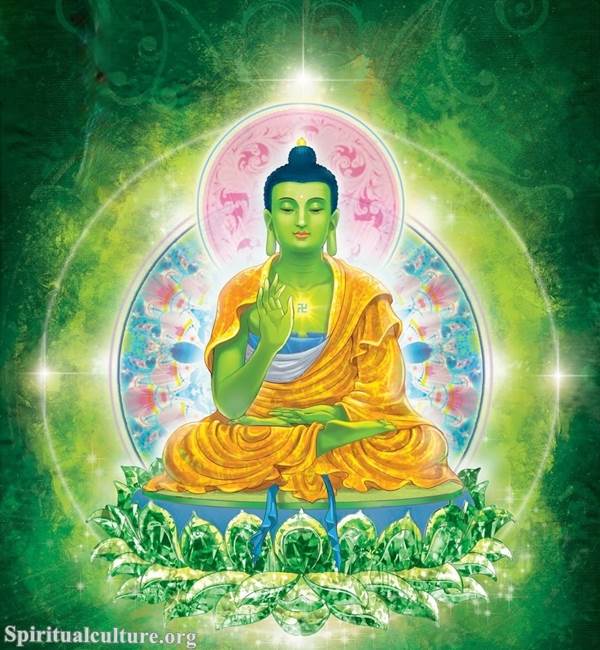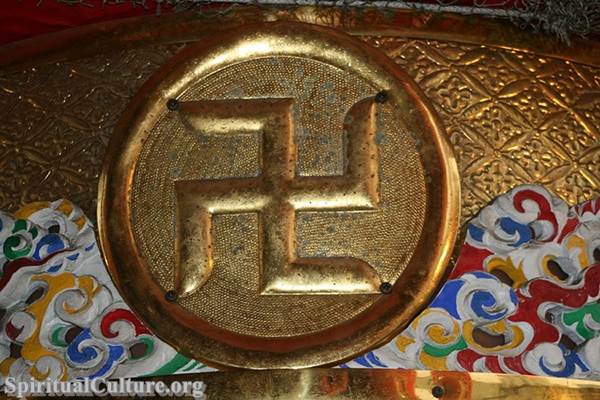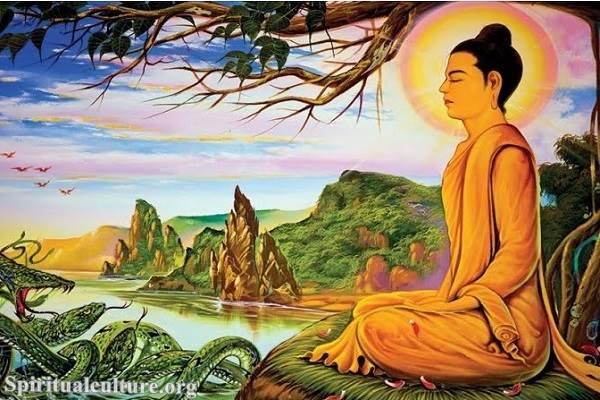In Vajrayana Buddhism, the five Dhyani Buddhas are considered to be archetypical, celestial beings who represent the pure and perfected qualities of a fully enlightened mind. The five Dhyani Buddhas are Amitabha, Akshobhya, Ratnasambhava, Vairochana, and Amoghasiddhi. Each of the Dhyani Buddhas is associated with a particular direction, element, emotion, and color.
Amoghasiddhi represents the wisdom of all-accomplishing action, which means that his followers strive to put their Buddhist teachings into action and to use their knowledge to help others. He is associated with the north direction, the element of air, and the color green. He is often depicted with the mudra of “all-accomplishing action”, which symbolizes the destruction of obstacles and the accomplishment of all positive aims.

In Tibetan Buddhism, Amoghasiddhi is also associated with the overcoming of envy and jealousy, which are considered to be major hindrances to spiritual progress. He is said to be the patron of those who seek to attain spiritual progress and overcome hindrances on their path to enlightenment. Through meditation on Amoghasiddhi, practitioners aim to cultivate the wisdom of all-accomplishing action and to bring about a state of peace, happiness, and fulfillment in their lives.
In addition to his representations in Vajrayana Buddhism, Amoghasiddhi is also considered to be one of the eight protector deities in the Buddhist pantheon. These protector deities are believed to be powerful spiritual beings who protect the Buddhist teachings and help to spread the Dharma. They are often depicted in Buddhist artwork and are the subject of various rituals and practices in Tibetan Buddhism.
In Buddhist symbols, Amoghasiddhi is often depicted sitting on a lotus throne and holding a vajra in his right hand. The lotus symbolizes the attainment of enlightenment and the vajra represents the indestructible wisdom that destroys ignorance and negative emotions. He is also often shown with his consort, Tara, who symbolizes the power of spiritual transformation and protection.
In summary, Amoghasiddhi Buddha represents the wisdom of all-accomplishing action, and his followers aim to cultivate this wisdom through meditation and by putting Buddhist teachings into action in their daily lives. He is considered to be the patron of those who seeks to overcome hindrances on their path to enlightenment and attain spiritual progress.


